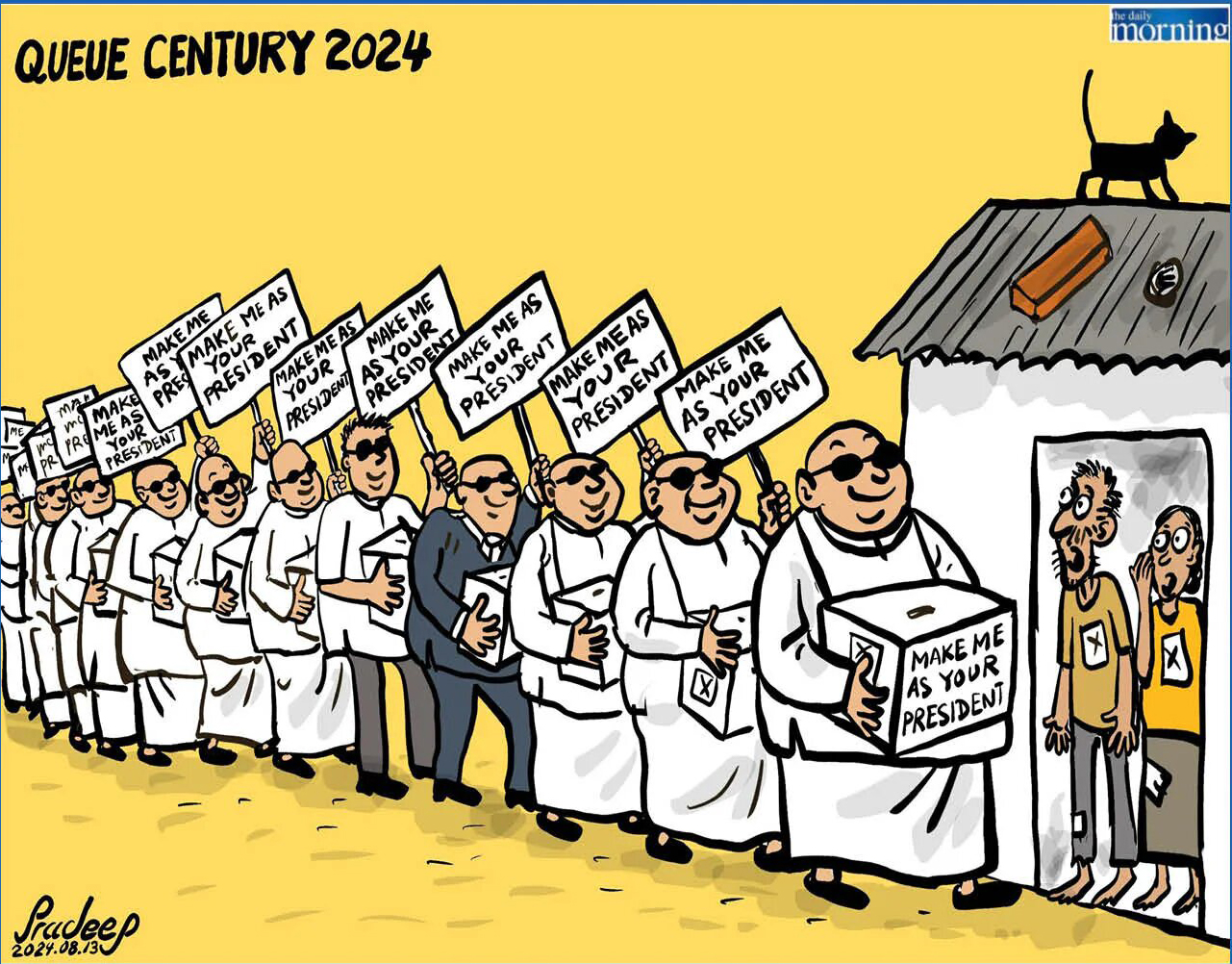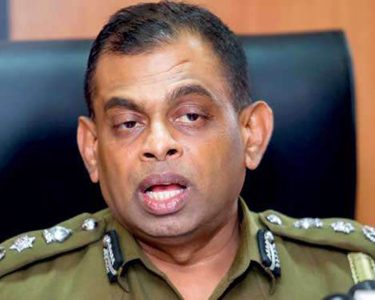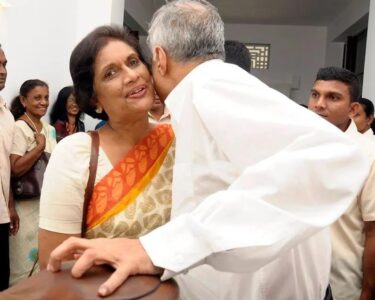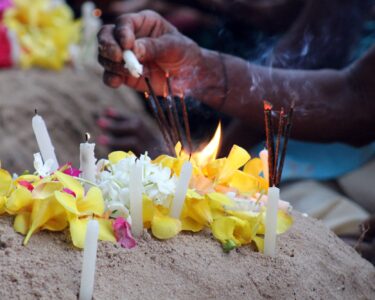In Sri Lanka, the traditional political landscape has been marred by the inability of established parties to maintain internal democracy, leading to a significant erosion of their identities.
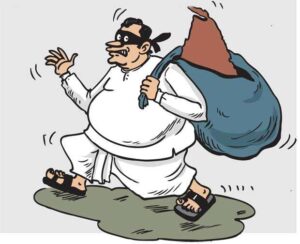
The lack of democratic processes within these parties has created a leadership culture that is more self-centred than focused on the collective good, severely undermining their credibility and electoral strength.Un holy alliances are been formed by the hour and the voters are been taken for a ridie with sudden crossovers by elected members whom they trusted
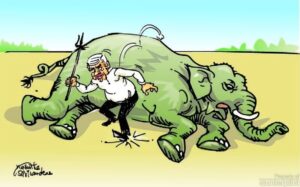
One of the most glaring examples of this is the United National Party (UNP), once a powerhouse in Sri Lankan politics. The UNP’s internal conflicts and failure to address the grievances of its members have resulted in a significant split, leading to the formation of the Samagi Jana Balavegaya (SJB) under the leadership of Sajith Premadasa. The UNP’s inability to democratize internally, coupled with a rigid leadership structure, has left it weakened and struggling to reclaim its former glory. Despite Ranil Wickremesinghe’s ascent to the presidency, the UNP remains a shadow of its former self, largely reliant on alliances with defectors from other parties to stay relevant.
Similarly, the Sri Lanka Freedom Party (SLFP) has suffered due to its undemocratic internal practices. The SLFP, once a dominant force in Sri Lankan politics, is now fractured into multiple factions, each pledging allegiance to different leaders. This fragmentation stems from years of top-down leadership and an inability to adapt to changing political dynamics. The party’s failure to foster internal democracy has not only diluted its identity but also made it increasingly dependent on alliances with other political entities, often at the cost of its ideological consistency.
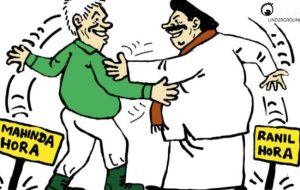
The Sri Lanka Podujana Peramuna (SLPP), led by the Rajapaksa family, presents another case where a lack of internal democracy has led to a concentration of power within a single family, marginalizing other voices within the party. This has caused significant discontent among its members, leading to defections and a loss of electoral appeal. The SLPP’s reliance on the Rajapaksa family has prevented it from evolving into a truly representative political entity, making it vulnerable to shifts in public opinion and internal dissent.
In these scenarios, the toxic culture of forming opportunistic alliances has further eroded the identities of established parties. Instead of building coalitions based on shared ideologies and long-term goals, these parties have increasingly resorted to alliances of convenience, aimed primarily at securing immediate electoral gains. This short-sighted approach has only deepened their identity crises, as voters increasingly see them as self-serving entities rather than principled political movements.
Ultimately, the loss of internal democracy within these established parties has led to a significant identity crisis, leaving them struggling to maintain relevance in a rapidly changing political environment. Without genuine internal reform, these parties risk further decline, as they continue to alienate both their members and the electorate at large.

The history of political alliances in Sri Lanka since independence in 1948 is marked by the evolution of coalitions formed to gain electoral advantage and govern effectively in a diverse and often fragmented political landscape. These alliances have significantly shaped the country’s political dynamics, reflecting shifts in ideology, power, and public sentiment.
Early Years and the United National Party (UNP)
After gaining independence, the United National Party (UNP), founded by D.S. Senanayake, became the first governing party of Sri Lanka. The UNP initially governed without forming any major alliances, relying on its broad support base across the country. However, the need for political coalitions soon became evident as other parties began to gain traction.
Formation of the Sri Lanka Freedom Party (SLFP) and the Leftist Alliance
The Sri Lanka Freedom Party (SLFP) was founded in 1951 by S.W.R.D. Bandaranaike after breaking away from the UNP. Bandaranaike positioned the SLFP as a center-left party, which appealed to the rural electorate and the Sinhala Buddhist majority. The SLFP’s victory in the 1956 elections was facilitated by forming the Mahajana Eksath Peramuna (MEP) alliance, which included leftist parties like the Lanka Sama Samaja Party (LSSP) and the Communist Party of Ceylon. This coalition marked one of the earliest successful political alliances in post-independence Sri Lanka.
The United Front Government of 1970
One of the most significant alliances in Sri Lankan political history was the United Front (UF) coalition formed in 1968, comprising the SLFP, the LSSP, and the Communist Party. This coalition won the 1970 general elections and led to major political and constitutional changes, including the adoption of the new Republican Constitution in 1972, which established Sri Lanka as a republic.
The Rise of the United National Party and the 1977 Elections
The 1977 general election was a turning point, with the UNP, led by J.R. Jayewardene, forming an overwhelming majority government. The UNP did not rely on a formal alliance but did benefit from defections and support from smaller parties, particularly after the election when it began implementing radical economic reforms.
The People’s Alliance and the Return of the SLFP
In 1994, Chandrika Bandaranaike Kumaratunga led the SLFP in forming the People’s Alliance (PA), a coalition that included the LSSP, the Communist Party, and several other leftist and nationalist parties. The PA won the 1994 parliamentary elections, ending 17 years of UNP rule, and Kumaratunga became President later that year. The PA’s success was rooted in its broad-based appeal, which contrasted with the UNP’s more market-oriented policies.
The United People’s Freedom Alliance (UPFA)
In 2004, the SLFP further expanded its coalition to form the United People’s Freedom Alliance (UPFA), which included the Janatha Vimukthi Peramuna (JVP), a Marxist party that had previously opposed the SLFP. The UPFA’s success in the 2004 parliamentary elections and subsequent presidential elections allowed it to dominate Sri Lankan politics for over a decade, culminating in the presidency of Mahinda Rajapaksa.
The Emergence of the Yahapalana Coalition
The 2015 presidential election saw the formation of the Yahapalana (Good Governance) coalition, which brought together the UNP, a faction of the SLFP led by Maithripala Sirisena, and several smaller parties. This coalition was crucial in defeating Mahinda Rajapaksa and bringing Sirisena to power as President, with Ranil Wickremesinghe of the UNP serving as Prime Minister. However, the Yahapalana coalition was fraught with internal conflicts, which eventually led to its collapse.
Recent Developments and Fragmentation
In recent years, Sri Lankan politics has seen further fragmentation, with the SLPP (Sri Lanka Podujana Peramuna) emerging from a split within the SLFP, led by Mahinda Rajapaksa. The UNP also faced a significant split, leading to the formation of the SJB (Samagi Jana Balavegaya) under Sajith Premadasa. These developments have resulted in a highly fragmented political landscape, where alliances are more critical than ever, but also more challenging to sustain due to deep-seated internal divisions within the major parties.
Conclusion
The history of political alliances in Sri Lanka reflects the complexities of its multi-ethnic and multi-religious society. While these alliances have often been instrumental in achieving electoral victories, they have also highlighted the difficulties in maintaining ideological coherence and internal democracy. As Sri Lankan politics continues to evolve, the ability to form and sustain effective alliances will likely remain a key determinant of political success.



